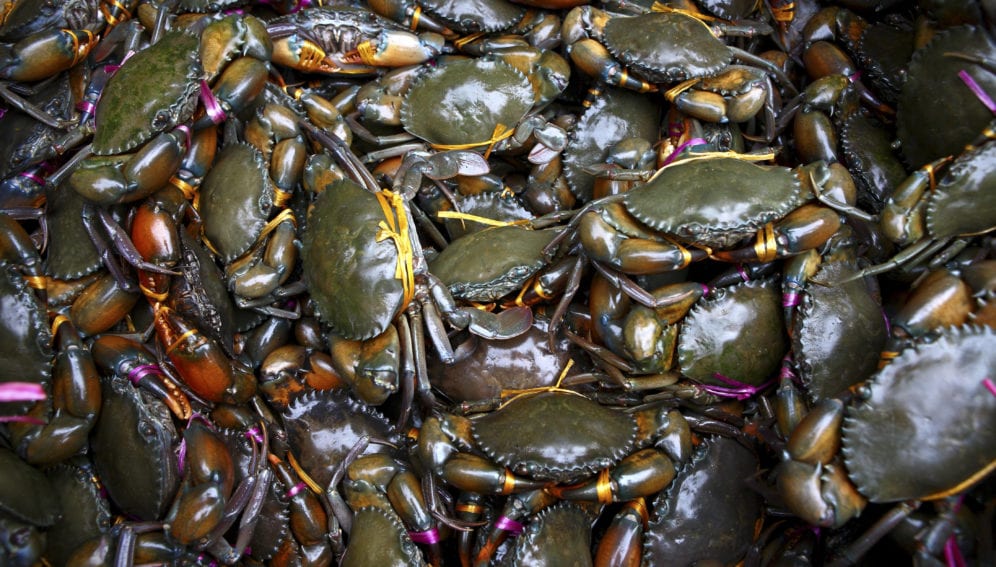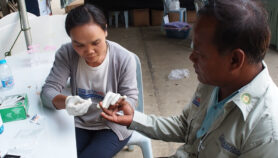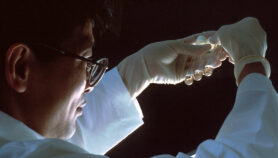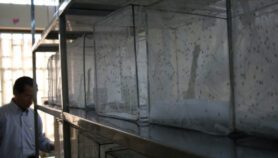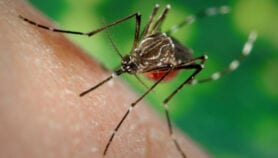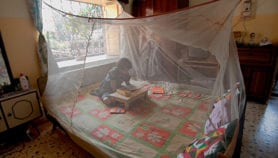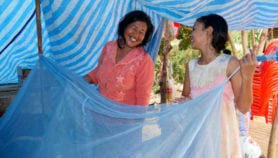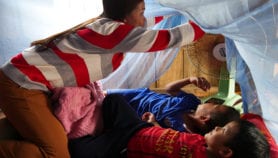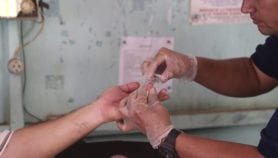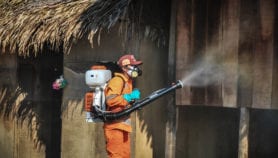By: Anna Valmero
Send to a friend
The details you provide on this page will not be used to send unsolicited email, and will not be sold to a 3rd party. See privacy policy.
[MANILA] A spray consisting of a mix of chitosan, extracted from crushed crab shells, and silver nanoparticles can reduce mosquito populations and help control malaria and other diseases spread by the insect vector.
Field studies of the CH-AgNP spray, done in the Tamil Nadu area in India, found it lethal to larvae and pupae of the Anopheles sundaicus mosquito that spreads coastal malaria.
Results of the studies, done in collaboration with the National Taiwan Ocean University and published in Hydrobiologia in May, also showed CH-AgNP increasing the appetite of predatory fish, such as goldfish (Carassiu auratus), for mosquito larvae.
“If and when the researchers will hold further studies to include dengue-carrying mosquitoes, it would be good to know how chitosan or silver-coated nanoparticles can address harmful enteric disease pathogens such as E. coli.”
Jeffrey Hii, Malaria Consortium
Senior researcher and corresponding author of the study, Kadarkarai Murugan, tells SciDev.Net that organic chitosan binds with most biological materials. When sprayed on mosquito breeding sites, CH-AgNP kills larvae by disrupting their gut enzymes.
As an organic material found in multiple sources including shellfish, insects and yeasts, chitin is readily available to make CH-AgNP, says Murugan. “It’s easy to produce, stable over time and only needs low doses to reduce A. sundaicus populations.”
Additionally, CH-AgNP was found to inhibit the growth of disease-causing species of water-borne pathogens such as Bacillus subtilis, Escherichia coli, Klebsiella pneumoniae and Proteus vulgaris.
Murugan says the next step is to study the comparative effects “using different crab species to make a nano-extract against the dengue and filarial vector in stagnant and sewage water ecosystems.”
Jeffrey Hii, member of the Malaria Consortium and faculty of Tropical Medicine at Mahidol University, and a former member of the WHO technical expert group on malaria prevention, says the research is “promising” as an expanded toolbox for integrated control of vector-borne diseases and water-borne pathogens.
Hii thinks it has the potential to become an integrated control tool for vector-borne diseases and neglected tropical diseases.
However, he emphasises the need for more data to understand how different molecular weights of chitosan and chitosan-metal mixture can damage the cell membrane of mosquito larvae, and on “the impact of bioaccumulation of silver nanoparticles on aquatic non-target organisms and the environment, in line with public health standards.”“If and when the researchers will hold further studies to include dengue-carrying mosquitoes, it would be good to know how chitosan or silver-coated nanoparticles can address harmful enteric disease pathogens such as E. coli usually found in the same water storage containers used for domestic purposes,” Hii adds.
This piece was produced by SciDev.Net’s Asia & Pacific desk.


